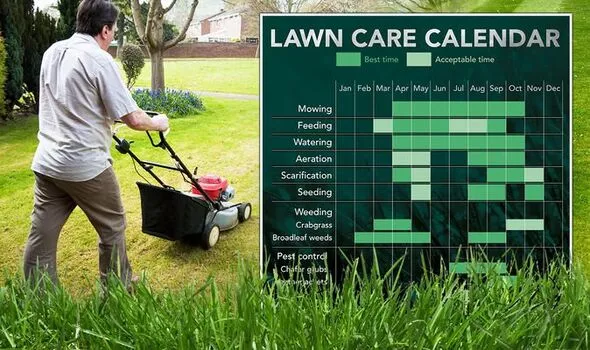Taking care of your lawn mower doesn’t have to be complicated. With the right schedule, you will save money and keep your grass looking perfect all season long.
Oil Maintenance: The Foundation of Mower Care
Getting Your Oil Changes Right
Your mower’s engine needs fresh oil to run smoothly. After buying a new machine, change the oil after just 5 hours of use. This initial change removes manufacturing debris that can damage your engine. Once you are past that first change, stick to a simple rule. Replace the oil every 50 hours of cutting or once each year. Most homeowners in Western cities find annual changes work perfectly for their needs.
Push mowers typically hold between 15 and 18 ounces of oil. Check your owner’s manual for the exact amount your model requires. Always use the manufacturer’s recommended oil type for gas and riding mowers. Sarah from Denver learned this lesson the hard way. She skipped oil changes for two seasons and ended up replacing her entire engine. “Now I mark my calendar every spring,” she says.
Blade Maintenance: More Important Than Most People Realize
Why Sharp Blades Matter More Than You Think
Dull blades create problems beyond just poor cutting. When blades lose their edge, your motor works harder and consumes more power. This extra strain shortens your engine’s life significantly. Even worse, dull blades can actually cause lawn diseases. They tear grass instead of cutting it cleanly. These ragged cuts become entry points for harmful bacteria and fungi.
Check your blade condition regularly throughout the season. Look for nicks, chips, or rounded edges that indicate dulling. A sharp blade cuts grass like scissors, while a dull one rips it apart. Safety comes first when dealing with blades. Always disconnect the spark plug before inspection. Make sure blades are properly tightened after any maintenance work.
Seasonal Maintenance: Timing Is Everything
Spring and Fall Care Schedule
Spring and fall maintenance twice yearly provides real benefits. This schedule ensures long-term performance without overdoing the work. Many Western homeowners find this timing perfect for their climate.
Spring preparation gets your mower ready for heavy use. Engine tune-ups become essential as temperatures warm up. A step-by-step checklist helps ensure you don’t miss important items. Power mowers need special attention after winter storage.
Summer brings different challenges. Heat and frequent use stress your equipment more than other seasons. Regular checks during July and August prevent breakdowns during peak mowing time.
Fall preparation focuses on winterization. This seasonal maintenance ranges from spring blade sharpening all the way to proper storage procedures. Getting this right prevents costly spring repairs.
Riding Mower Specific Care: Heavy-Duty Equipment Needs
Beyond Basic Walk-Behind Maintenance
Zero-turn mowers need their own routine maintenance schedule. These machines work harder and require more attention than walk-behind models. Riding mower maintenance schedules differ significantly from smaller equipment.
Regular checkups should cover five key areas. Engine oil, belts, tire pressure, battery connections, and blade condition need frequent inspection. Mark from Phoenix checks these items every other week during mowing season.
Belt inspection catches problems early. Look for fraying, cracking, or stretching that affects performance. Tire pressure changes with temperature, so check it monthly during active seasons.
Battery connections corrode over time, especially in humid climates. Clean terminals prevent starting problems and extend battery life. This simple step saves expensive replacements.
Engine Performance and Longevity
Scheduled Engine Care Makes the Difference
Lawn mower engines need scheduled maintenance calendars just like cars. Engine maintenance schedules combined with troubleshooting guides keep problems manageable. Following manufacturer recommendations prevents most major issues.
Proper maintenance really does improve performance and extend equipment life. Lisa from Seattle has used the same mower for eight years with regular care. “It starts on the first pull every time,” she notes proudly.
Air filters clog quickly during dusty conditions. Replace or clean them based on your local environment. Spring pollen and fall leaves create extra filtering challenges.
Spark plugs wear out gradually and affect starting. Replace them annually for reliable performance. This inexpensive part prevents frustrating starting problems.
Professional vs DIY: Making the Right Choice
When to Call the Experts
Professional service combined with fuel stabilizer usage comes recommended by many experts. Technicians catch problems before they become expensive repairs. They also have specialized tools for complex adjustments.
DIY lawn mower maintenance guides make many tasks accessible to homeowners. Riding lawn mower DIY maintenance and oil changes are definitely possible with basic tools. YouTube videos and manufacturer guides provide helpful instruction.
Consider your skill level honestly. Simple tasks like oil changes and air filter replacement work well for most people. Complex engine work or electrical problems need professional attention.
Cost factors into this decision too. Professional tune-ups cost between $75 and $150 in most Western cities. Compare this against the price of tools and your available time.
Creating Your Maintenance Strategy
Planning Your Equipment Care Approach
Landscaping equipment maintenance plans keep everything organized. Include blade sharpening procedures in your annual schedule. Write down what you did and when you did it.
Ultimate lawn mower tune-up and maintenance checklists exist from various manufacturers. Routine mower care guidelines help you stay on track throughout the season. Print these guides and keep them in your garage.
Tom from Colorado Springs uses a simple notebook system. He records every oil change, blade sharpening, and repair. “When selling equipment, buyers love seeing maintenance records,” he explains.
Set reminders on your phone for regular tasks. Spring preparation in March, summer checks in July, and fall winterization in October work for most climates.
Winter Storage and Preparation
Protecting Your Investment During Off-Season
Fall lawn mower maintenance requirements vary by region. Western homeowners face different challenges than those in humid climates. Dry storage becomes crucial for preventing rust and corrosion.
Fall winterization represents part of proper seasonal maintenance. Drain fuel or add stabilizer based on manufacturer recommendations. Old fuel causes starting problems and carburetor damage.
Clean your mower thoroughly before storage. Grass clippings left on the deck promote rust formation. A simple garden hose wash followed by complete drying works well.
Store equipment in a dry location away from temperature extremes. Garages work better than outdoor sheds for most Western climates. Cover your mower to prevent dust accumulation.
Best lawn mower maintenance practices include both spring tune-up and fall winterization importance. This complete approach keeps equipment reliable year after year. Following these guidelines protects your investment and ensures great results every season.






